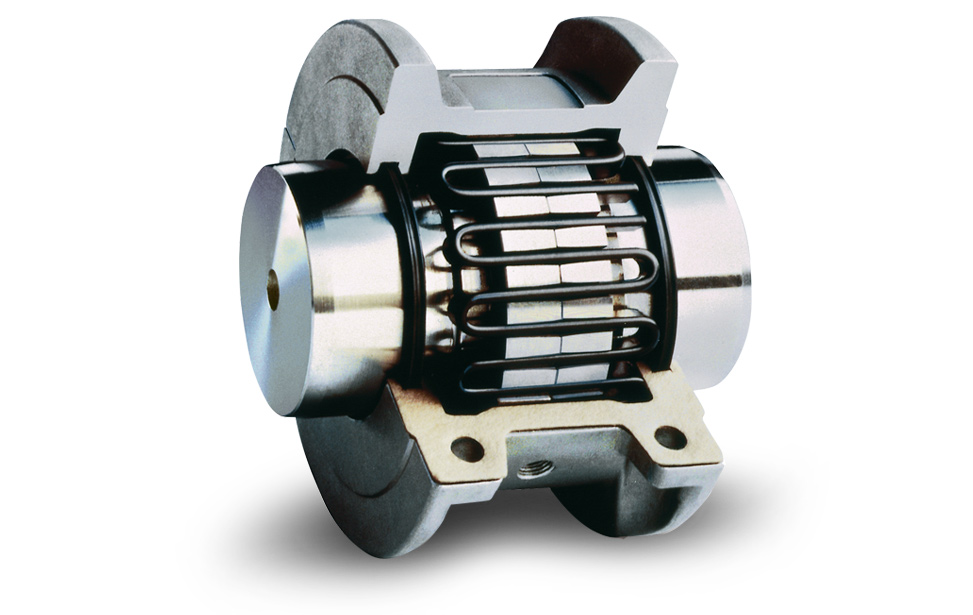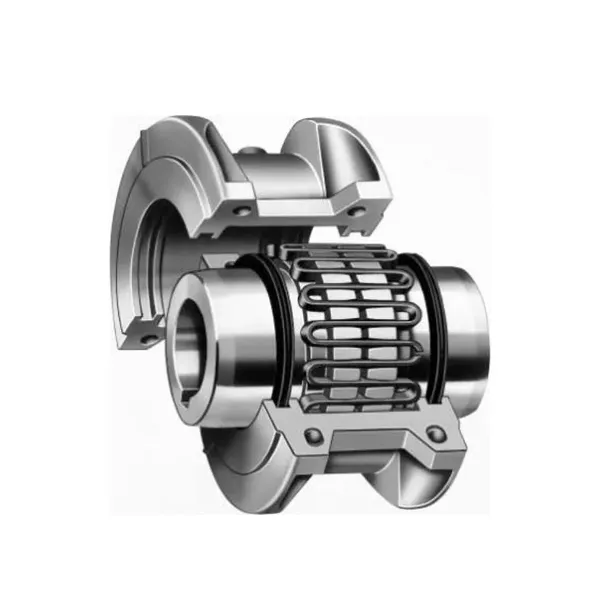Product Description
Horizontal Vertical damper overload device split taper Grid Coupling
Related products:
Production workshop:
Company information:
/* January 22, 2571 19:08:37 */!function(){function s(e,r){var a,o={};try{e&&e.split(“,”).forEach(function(e,t){e&&(a=e.match(/(.*?):(.*)$/))&&1

Understanding the Torque and Misalignment Capabilities of Motor Couplings
Motor couplings play a critical role in transmitting torque from the motor to the driven equipment while accommodating certain degrees of misalignment between the motor and driven shafts. The torque and misalignment capabilities of motor couplings are essential factors to consider when selecting the appropriate coupling for a specific application.
Torque Capabilities:
The torque capacity of a motor coupling refers to its ability to handle the maximum amount of torque that can be transmitted through the coupling without causing failure or damage. Couplings are designed with specific torque ratings to ensure reliable power transmission.
The torque capacity of a motor coupling depends on factors such as the material used, the size and design of the coupling, and the application requirements. High-performance couplings made of robust materials, such as steel or alloy, can handle higher torque loads and are often used in heavy-duty industrial applications.
Misalignment Capabilities:
Misalignment is a common occurrence in mechanical systems due to factors such as installation errors, thermal expansion, and dynamic forces. Motor couplings are designed to accommodate certain degrees of angular, parallel, and axial misalignment between the motor and driven shafts.
The misalignment capabilities of a motor coupling are specified as angular misalignment, parallel misalignment, and axial misalignment. Angular misalignment refers to the angle between the motor and driven shafts, parallel misalignment refers to the lateral offset between the shafts, and axial misalignment refers to the axial displacement along the shafts.
Flexible couplings, such as elastomeric or grid couplings, offer greater misalignment capabilities compared to rigid couplings like gear couplings. The ability to handle misalignment helps reduce stress on the connected equipment and prolongs the life of the coupling and other mechanical components.
Selecting the Right Coupling:
When selecting a motor coupling, it is crucial to consider the torque and misalignment requirements of the specific application. Engineers and designers need to assess the torque demands of the driven equipment and the potential misalignments that may occur during operation.
Choosing a coupling with adequate torque and misalignment capabilities ensures efficient power transmission, minimizes wear on the equipment, and prevents premature failure. Additionally, the coupling’s operating conditions, environmental factors, and service life expectations should be taken into account to make an informed coupling selection.
In summary, understanding the torque and misalignment capabilities of motor couplings is essential for optimal performance, reliability, and longevity in mechanical power transmission systems.
“`
Explaining the concept of backlash and how it affects motor coupling performance.
Backlash is a crucial concept in motor couplings and other mechanical systems involving gears or interlocking components. It refers to the amount of clearance or play between mating components, resulting in a delay or gap before motion is transmitted from one component to the other. In the context of motor couplings, backlash can have both positive and negative effects on performance.
1. Effects of Backlash on Motor Coupling Performance:
Positive Effects:
- Shock Absorption: Backlash in flexible couplings can act as a shock-absorbing mechanism, reducing the impact of sudden loads or vibrations on the motor and driven load. This property helps protect the motor and other connected components from damage.
- Misalignment Compensation: Backlash allows some degree of angular, parallel, and axial misalignment between the motor and driven load. This feature is particularly beneficial in applications where precise alignment is challenging to achieve.
Negative Effects:
- Reduced Precision: Backlash introduces a degree of play or slop in the system, leading to reduced precision and accuracy in motion transmission. This can be problematic in applications requiring tight positioning control.
- Resonance and Vibration: Excessive backlash can lead to vibration and resonance issues, especially at high speeds. This can affect the overall performance and efficiency of the system.
- Reversing Loads: Backlash can cause a dead zone when reversing the direction of motion. This means that before the load reverses, the clearance must be taken up, leading to potential jerks or delays in motion.
2. Controlling Backlash in Motor Couplings:
Controlling backlash is essential to optimize motor coupling performance for specific applications. Manufacturers can design couplings with varying degrees of backlash depending on the application’s requirements. For instance:
- Low Backlash Designs: Some couplings are engineered to minimize backlash, making them suitable for applications demanding high precision and minimal play.
- Adjustable Backlash: Certain couplings allow users to adjust the amount of clearance, enabling customization based on the specific load conditions and system requirements.
- Preloading: Preloading is a technique used to minimize backlash by applying a slight tension or compression force between the mating components. This eliminates the clearance and enhances precision.
Ultimately, selecting the right motor coupling with the appropriate level of backlash involves considering factors such as the application’s load characteristics, required precision, speed, and potential vibration issues. Understanding and managing backlash play a critical role in maximizing the efficiency and reliability of motor couplings in various mechanical systems.
“`
Common Industries that Use Grid Couplings and Their Applications
Grid couplings are widely used in various industries due to their ability to handle high torque, misalignments, and shock loads. Some of the common industries and their applications where grid couplings are employed include:
| Industry | Applications |
|---|---|
| Power Generation |
|
| Steel Mills |
|
| Mining |
|
| Pulp and Paper |
|
| Chemical Processing |
|
| Oil and Gas |
|
| Water and Wastewater |
|
Grid couplings are favored in these industries because they offer reliable performance in demanding applications, helping to ensure smooth operation and reduced downtime. Their ability to accommodate misalignments and dampen vibrations makes them suitable for various heavy-duty machinery and equipment.
“`

editor by CX 2024-04-19
